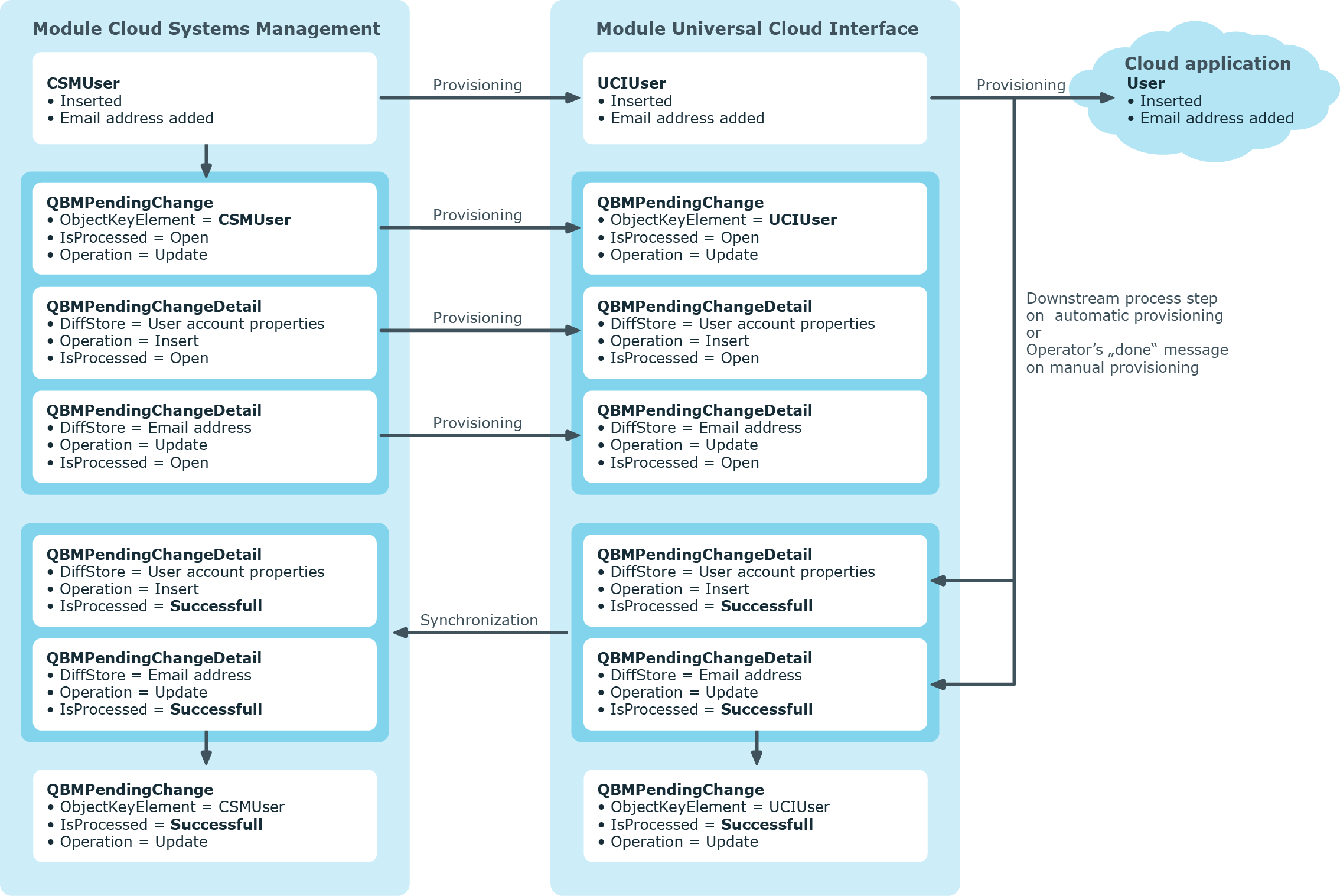Provisioning object changes
Changes to cloud objects can only be made in the Cloud Systems Management Module. Provisioning processes ensure that object changes are transferred from the Cloud Systems Management Module into the Universal Cloud Interface Module. By default, these object changes are then published in the cloud application by automatic provisioning processes. For certain cloud applications, automated interfaces for provisioning changes should not be implemented. Changes can be manually provisioned for cloud application like this. The manual provisioning processes are displayed over the Web Portal. Operators can transfer pending changes to the cloud application on the basis of this overview.
One Identity Manager logs the object changes as pending changes in separate tables. The QBMPendingChange table contains the modified objects and their processing status. The details of the changes, operations to run, time stamp and processing status are saved in the QBMPendingChangeDetail table. Pending changes are processed in the order in which they were created if provisioning is automatic. In the case of manual provisioning, the pending changes are listed in the order they were created in the Web Portal.
The processing status of an object is not set to successful until all associated changes for this object have been successfully provisioned. An object's processing status is set as failed if all associated changes have been processed and at least one them has failed.
Detailed information about this topic
The provisioning sequence
The following visual shows how object changes are provisioned and how the pending changes associated with it are processed. The sequence is identical for automatic and manual provisioning processes and does not depend on whether the Cloud System Management and the Universal Cloud Interface modules are installed in the same or in separate databases.
Figure 3: Provisioning sequence for pending changes

By default, the Cloud Systems Management module is synchronized hourly with the Universal Cloud Interface. This ensures that the processing state for pending changes is declared promptly in the Cloud Systems Management Module.
Related topics
Displaying pending changes
You can view pending changes in the Manager. Here, manual, and automatic provisioning processes are shown.
To display pending changes
Table 13: Meaning of the icons in the toolbar
|

|
Show selected object. |
|

|
Reload the data. |
Related topics
Retention time for pending changes
Pending changes are saved for a fixed period. After this period has expired, the entries are deleted by the DBQueue Processor from the QBMPendingChange and QBMPendingChangeDetail tables. The retention period depends on the status of provisioning processes and can be configured in the configuration parameter. The specified periods apply to both automatic and manual provisioning processes.
To configure the retention period for pending changes
-
To change the retention period for successful provisioning processes, in the Designer, edit the value of the QBM | PendingChange | LifeTimeSuccess configuration parameter. Enter a retention period in days. The default is 2 days.
-
To change the retention period for failed provisioning processes, in the Designer, edit the value of the QBM | PendingChange | LifeTimeError configuration parameter and enter the retention period in days. The default is 30 days.
-
To change the retention period for pending provisioning processes, in the Designer, edit the value of the QBM | PendingChange | LifeTimeRunning configuration parameter and enter the retention period in days. The default is 60 days.
Related topics



